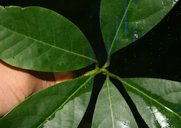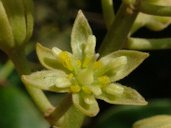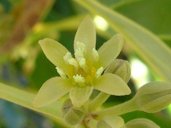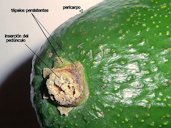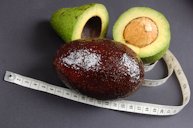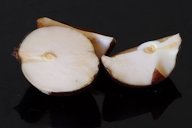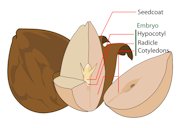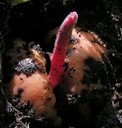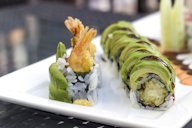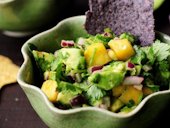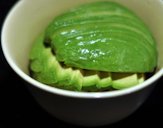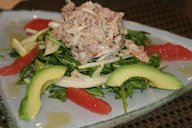| Avocado - Persea americana | |||||||||||||||||||||||||||||||||||||||||||||||||||||||||||
|---|---|---|---|---|---|---|---|---|---|---|---|---|---|---|---|---|---|---|---|---|---|---|---|---|---|---|---|---|---|---|---|---|---|---|---|---|---|---|---|---|---|---|---|---|---|---|---|---|---|---|---|---|---|---|---|---|---|---|---|
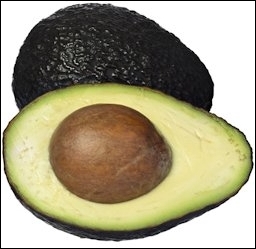 Fig. 1  Persea americana Fig. 2  Avocado tree (P. americana) annual new foliage 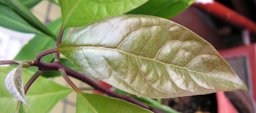 Fig. 3  New leaf of P. americana Fig. 4  The leaves of P. americana  Fig. 5  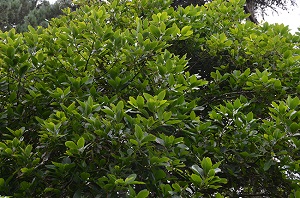 Fig. 6  Avocado foliage Fig. 11  Avocado inflorescense 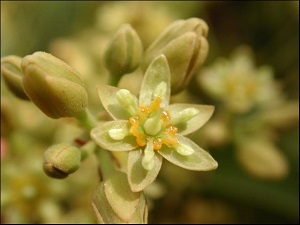 Fig. 12  Avocado inflorescense close up Fig. 13  Honey bee (Apis mellifera) pollinating avocado cv. Zutano (P. americana) flower Fig. 14  P. americana flowers 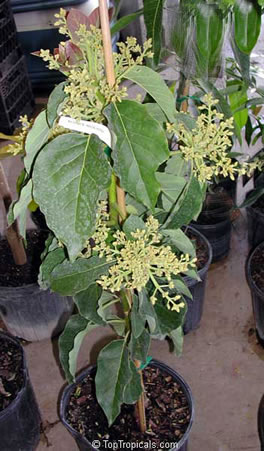 Fig. 15 Grafted 2 year old tree in bloom 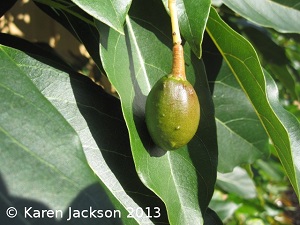 Fig. 19  Fig. 20  Avocados (P. americana): big fruits variety bearing both young fruits and ripen fruits one year old. Young foliage of avocado trees (when leaves are developing) is typically red. 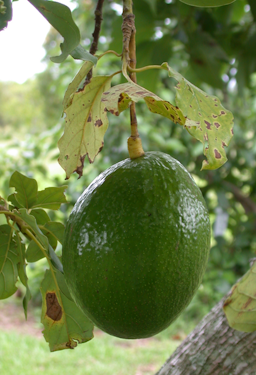 Fig. 21 P. americana Mill. 'Choquette' 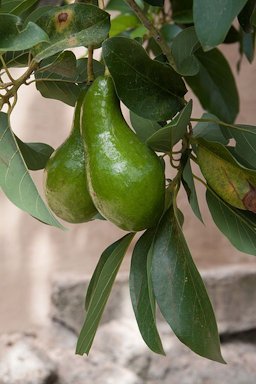 Fig. 22  Avocado in Santiago de Cuba  Fig. 23  Avocado 'Choquette' grafted 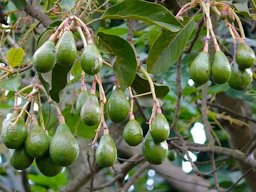 Fig. 24  Avocados (P. americana). Red Chilli Hideaway, Kampala, UGANDA. 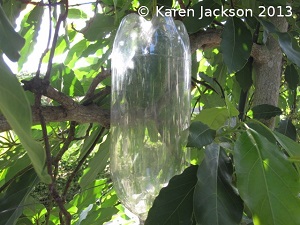 Fig. 32  Protecting the fruit from pests, using a 2 lt soft drink bottle 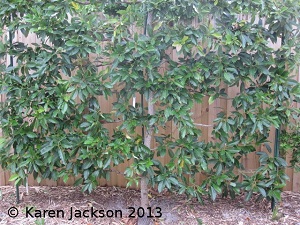 Fig. 33  Avocado tree espaliered 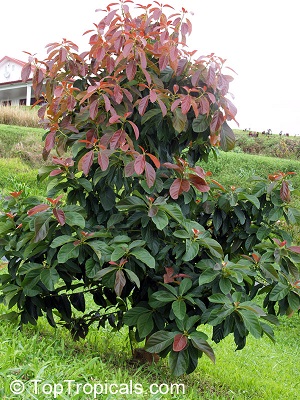 Fig. 34  New growth on young tree 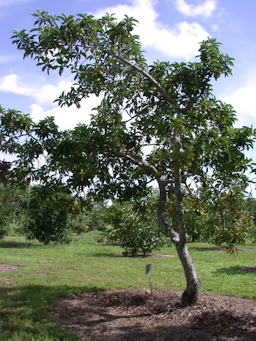 Fig. 35  P. americana Mill. 'Tower 2'  Fig. 36  P. americana Mill. 'Choquette' 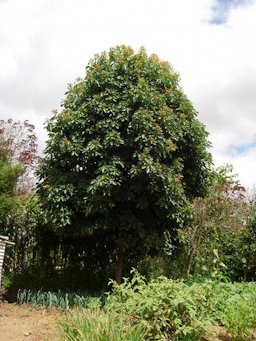 Fig. 37  P. americana United Republic of Tanzania  Fig. 38 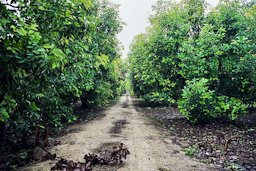 Fig. 39  Agriculture in Israel, avocado grove Fig. 40  Avocado trees (P. americana) orchard on Reunion island (Les Avirons) with coffee planted between the rows  Fig. 41  Agriculture in Israel  Fig. 42 Avocado banana smoothie 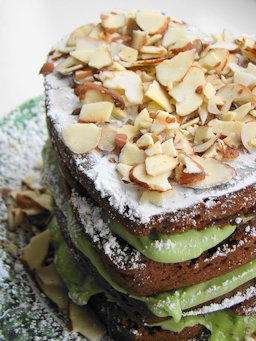 Fig. 43  A mocha almond fudge avocado layer cake. Avocado is present within the layers of the cake. |
Scientific name Persea americana Mill. Pronunciation PER-see-uh uh-mair-ih-KAY-nuh Species P. americana Mill. var. drymifolia (Schltdl. & Cham.) S.F. Blake, Mexican avocado P. nubigena L.O. Williams, Guatemalan avocado P. americana Mill. var. americana, West Indian avocado Common names English: avocado; French: avocatier; German: Avocado, Avocadobaum, Avocadopalme; Japanese Rōmaji: abokado, wani-nashi; Portuguese (Brazil): abacate; Spanish: aguacate, palto; Swedish: avokado; Transcribed Chinese: e li 11 Synonyms P. americana var. americana; P. americana var. angustifolia Miranda; P. americana var. drimyfolia (Cham. & Schltdl.) S.F.Blake; P. americana var. floccosa (Mez) Scora; P. americana var. nubigena (L.O.Williams) L.E.Kopp 13 Relatives P. schiedeana Nees; a more distant relative is Beilschmiedia anay Kosterm Family Lauraceae Origin Native to Mexico and the tropical Americas 1 USDA hardiness zones 8-11 10 Uses Shade; fruit; specimen Height 30-40 ft (9.1-19.8 m) 1 Spread 25-35 ft (7.6-10.6 m) 1 Crown Canopy ranges from low, dense and symmetrical to upright and asymmetrical Growth rate Fast Trunk/bark/branches Limbs are easily broken by strong winds or heavy crop loads; branches droop; not showy; typically one trunk 1 Pruning requirement Needed for strong structure Leaves Evergreen; 3-16 in. (7-41 cm); elliptic, oval, lanceolate; often hairy, reddish when young, then smooth, leathery, dark green Flowers Flowers not showy; green; spring or winter; perfect flowers but at different times of day so need insect pollination Fruit Berry; pear-shaped; 3-8 in. (7.6-20.3 cm); fleshy; smooth to pebbly texture; yellow green to dark purple or almost black when ripe 1 USDA Nutrient Content: commercial varieties, Florida, California pdf Season May-Feb. according to variety Light requirement Full sun, partial sun or partial shade Soil tolerances Clay; sand; loam; alkaline; acidic; well-drained 1 pH preference 5.5-7.0 Drought tolerance Moderate 1 Aerosol salt tolerance Sensitive to salinity Cold tolerance 16-28 ºF (8.9-2.2 ºC) for mature trees depending on variety Plant spacing 23-30 ft or more (7-9.1 m) away from buildings and other trees 1 Roots Roots are intolerant of anaerobic conditions; waterlogging for more than 24 h can kill trees 12 Invasive potential * Not assessed/incomplete assessment Pest/disease resistance Many insect pests attack avocados but seldom limit fruit production; susceptible to verticillium wilt Known hazard The foliage is toxic; fruit and leaves a litter problem (Fig. 41) Reading Material Avocado Growing in the Florida Home Landscape, University of Florida pdf Avocado, University of Hawai'i at Mānoa pdf Avocado, California Rare Fruit Growers Avocado, Fruits of Warm Climates Persea americana, Agroforestree Database Persea americana, PROSEA Foundation Origin/Distribution Avocados are indigenous to tropical America. The Mexican race originated in the Mexican highlands, the Guatemalan race originated in the highlands of Guatemala and the West Indian race originated in the tropic lowlands of Central America. Avocados are grown in tropical and subtropical areas of the world. In Florida, commercial production is primarily in Miami-Dade and Collier Counties, however, small plantings and isolated trees are found in warm locations throughout the state. 1 The Case for Florida Avocados, Edible South Florida Importance One of the important fruits in the American tropics, the avocado is grown commercially in many areas of the world including Mexico, Brazil, Dominican Republic, Australia, Israel, Chile, tropical Africa, Spain, and Indonesia. In the U.S. avocados are produced in California, Florida, Puerto Rico, Hawaii, and Texas. 2 Description The large, lustrous dark green leaves and low-branching, open canopy of avocado makes it a wonderful shade tree but it is most often grown for the abundant production of its well-known, delicious, buttery fruits. 1 The avocado is classified as an evergreen, although some varieties lose their leaves for a short time before flowering. 9 Races and cultivars The avocados cultivated in the United States are classified horticulturally in three races: the West Indian, the Guatemalan, and the Mexican. The West Indian and Guatemalan races, so far as can be judged at present, are two expressions of one botanical species, Persea americana, while the Mexican race represents a distinct species, P. drymifolia. Horticultural varieties of the avocado, when propagated from seed, do not reproduce the parent fruit in every detail. 3 Historical Information about the Avocado Races and Varieties, Manual of Tropical and Sub Tropical Fruits Race Characteristics, University of Florida Ecology West Indian and some hybrid varieties are best adapted to a lowland tropical climate and relatively frost-free areas of the subtropics. Mexican varieties are more cold tolerant, withstanding winter temperatures to 16 F (-9 C) and not well adapted to lowland tropical conditions. Some can be grown as far north as Charleston, South Carolina. Guatemalan x Mexican hybrids are generally more cold tolerant than West Indian x Guatemalan hybrid varieties. Some of the more cold-tolerant varieties in Florida include 'Brogdon', 'Gainesville', 'Mexicola', and 'Winter Mexican'. However, it may be difficult to find plants of these varieties. Moderately cold-tolerant types include 'Tonnage', 'Choquette', 'Hall', 'Lula', 'Taylor', 'Monroe', and 'Brookslate'. Varieties with little cold-tolerance include 'Simmonds', 'Pollock', 'Dupuis', 'Nadir', 'Hardee' and 'Waldin'. 9,10 Leaves Leaves spirally arranged, simple and entire, variable in shape and size; petioles 0.6-2 in. (1.5-5 cm) long; blade elliptic to lanceolate, ovate or obovate, with prominent midrib and veins. Leaves are 3-16 in. (7-41 cm) in length. They are often pubescent (Fig. 10) and reddish when young (Fig. 2,3), becoming smooth, leathery, and dark green when mature. 9,12
Flowers The many-flowered lateral inflorescences (structures that hold the flowers) are borne in a pseudoterminal position. The central axis of the inflorescence terminates in a shoot. Flowers are perfect, yellowish-green, and 3/8 to 1/2 inch (1 to 1.3 cm) in diameter. 2 Pollination The avocado has a ‘complete’ flower, but with an unusual behaviour known as ‘protogynous dichogamy’. The avocado flower has both functional male and female organs in the one flower, but opens and closes twice over a two-day period — the first day as functionally female (Fig. 16) and the next as functionally male (Fig. 17). Each opening stage only lasts about half a day. 8 In general, on a single tree all the open flowers will be synchronised. That means they will be all functionally male or all functionally female. The avocado pollen of one tree is compatible with itself and quite capable of pollinating its own flowers, known as self-pollination. The unusual flowering behaviour is to reduce the likelihood of this occurring, by minimising the amount of own-pollen about when female stages are receptive. To further maximise the likelihood of cross-pollination some trees will open first in the morning as functionally female, close and then reopen the next afternoon as functionally male (type A flowering sequence). 8 Type A: Donnie, Dupuis, Simmonds, Nadir, Russell, Nesbitt, Waldin, Lula, Choquette, Hall, Meya, Reed, Brookslate. Other trees open first in the afternoon as functionally female, close and then reopen the next morning as functionally male (type B flowering sequence). 8 Type B: Hardee, Pollock, Brogdon, Miguel, Tower-2, Beta, Loretta, Tonnage, Booth 8, Marcus, Booth 7, Monroe, Kampong. New evidence indicates avocado flowers may be both self and cross-pollinated under Florida conditions. Self-pollination occurs during the second flower opening when pollen from the anthers is transferred to the stigma of the female flower parts. 2 Cross-pollination may occur when female and male flowers from A and B type varieties open simultaneously. Self-pollination appears to be primarily caused by wind, whereas cross-pollination is caused by large flying insects such as bees and wasps. 2
Fig. 16. Hass avocado flower during the functionally female stage, the first opening stage Fig. 17. Flower during functionally male stage, after dehiscence, the second opening stage Fig. 18. Avocado inflorescence during the midday cross-over period showing the closing functional female flower and the opened functionally male flower; the stamens opened to release pollen. Fruit The fruit is a berry, consisting of a single large seed, surrounded by a buttery pulp. Florida avocado varieties contain 3 to 15% oil. The skin is variable in thickness and texture. Fruit color at maturity may be green, black, purple or reddish, depending on variety. Fruit shape ranges from spherical to pyriform, and the fruit weigh from a few ounces to 5 lbs (2.3 kg). The fruit does not generally ripen until it falls or is picked from the tree. In Florida, the fruit is considered sufficiently mature for harvest when it reaches a specified calendar date and weight or size. The specific dates, weights, and sizes used to determine maturity vary by variety. 2 Seed large, globose, with 2 seed coats and 2 large fleshy cotyledons enclosing a small embryo. Fruit development from setting to maturity follows a sigmoidal curve and takes 6-12 months. 12
Fig. 25. Detalle del extremo peduncular del fruto con los tépalos persistentes. Probablemente var. 'Fuerte', origen Huelva, comercio, Madrid (España). (Detail of the peduncular end of the fruit with the persistent sepals.) Fig. 26. Alpukat (Bahasa, Indonesia), avocado Fig. 27. The split seed of a California-grown Hass avocado, with the embryo exposed Varieties recommended for Florida, University of Florida Cultivar Viewer, University of Florida, IFAS/TREC Harvesting In general, avocado varieties may be harvested anytime during their season of maturity. Ripening is inhibited while the fruit is on the tree, but when picked, fruit softens to eating condition in 4-14 days. Fruit is clipped from the tree, retaining a pedicel button which prevents the entrance of post-harvest diseases through the fruit stalk scar. 12 The fruit from an avocado tree does not all have to be harvested at the same time. This feature allows you to leave the fruit on the tree and pick fruit only when you want to eat it. 2 Harvest Calendar Propagation Most avocado varieties do not come true from seed (i.e., a seed will not render the same variety), so they must be propagated vegetatively. Cleft grafting is the preferred method of propagation in Florida, although veneer grafting is also used. Young, vigorously growing seedlings are used for rootstocks, and terminals of leafy shoots are used for scion material. Grafting is most successful during the cooler months from November through February or March, but can be done from June through March if plant material is available. 2 Typically, seedlings of 'Lula' and 'Waldin' are used as rootstocks in Florida because of their uniformity, vigor, and availability of seeds. 2 An avocado tree grown for its fruit production should either be from budded or grafted trees that will produce fruit within 2 or 3 years as compared to the 8-10 or more years required of seedling avocados. 9
Fig. 28. Diagram from the seed of an avocado where the embryo is visible Fig. 29. The seed of P. americana sprouting Fig. 30. A young (2 weeks old) avocado sprout Fig. 31. P. americana, young avocado plant (seedling), complete with seed and roots Avocado Propagation, University of Florida Grafting Avocado, University of Hawai'i at Mānoa pdf Types of Propagation, Edible South Florida How to Grow an Avocado Tree (from seed), wikiHow Climate The West Indian race is most sensitive to cold and may be damaged when temperatures fall below 30-32 °F, -1-0 °C. However, trees of this race are adapted to high temperatures 82-97 °F (28-36 °C) with a 39-41 °F (4-5 °C) diurnal range. Mexican and Guatemalan race trees can withstand 25 °F (-4 °C) for short periods; optimum daytime temperatures for growth are 77-91 °F (25-33 °C) with an 46-50 °F 98-10 °C) diurnal range. Established trees will tolerate temperatures to 104 °F (40 °C), but prolonged exposure with low relative humidity results in severe stress and loss of productivity. 12 Planting In general, avocado trees should be planted in full sun for best growth and fruit production. Select a part of the landscape away from other trees, buildings and structures and powerlines. Remember avocado trees can become very large if not pruned to contain their size. Select the warmest area of the landscape that does not flood (or remain wet) after typical summer rainfall events. 2 Primary anchorage roots penetrate to 10-16 ft (3-4 m), but the tree is largely supported by a shallow to 1.6 ft (0.5 m) unsuberized (non corky) secondary root system. A low frequency of root hairs limits the uptake of water and nutrients. 12 Pruning The amount of pruning required by the avocado depends largely on the variety. Some make short stocky growths and form shapely trees without the assistance of the pruning-shears, while others take long straggling shapes and do not branch sufficiently to form a good crown. These latter must be cut back heavily. 3
Avocado Pruning, Manual of Tropical and Sub Tropical Fruits Fertilizing Young trees should be fertilized every 1 to 2 months during the first year, beginning with 1/4 lb (114 g) of fertilizer and increasing to 1 lb (455 g) per tree. Thereafter, 3 or 4 applications per year in amounts proportionate to the increasing size of the tree are sufficient but, not to exceed 20 lbs per tree per year. From spring through summer, trees should receive 3 to 4 annual nutritional sprays of copper, zinc, manganese, and boron for the first 4 to 5 years. Thereafter, only zinc, manganese, and possibly boron applications are necessary. Avocado trees are susceptible to iron deficiency under alkaline and high pH soil conditions. Iron deficiency can be prevented or corrected by periodic soil applications during the late spring and summer of iron chelate formulated for alkaline and high soil pH conditions 2 Irrigation Newly planted avocado trees should be watered at planting and every other day for the first week or so and then 1 to 2 times a week for the first couple of months. During prolonged dry periods (e.g., 5 or more days of little to no rainfall) newly planted and young avocado trees (first 3 years) should be well watered twice a week. Once the rainy season arrives, irrigation frequency may be reduced or stopped. Once avocado trees are 4 or more years old irrigation will be beneficial to plant growth and crop yields during prolonged dry periods. The specific water requirements for mature trees have not been determined. However, as with other tree crops, the period from bloom and through fruit development is important and drought stress should be avoided at this time with periodic watering. 2 Cultural Practices
Pests Mites and scale infestations can become quite serious in local areas. Diseases Root rots on poorly-drained soils and leaf-spotting diseases can be troublesome. Laurel wilt disease is impacting avocado groves of South Florida. Food Uses Avocado halves are perfect natural containers for appetizers, lunches, or light dinners. Seafood salad, curried chicken, or fresh fruit salad are just a few great fillers. Avocado slices, cubes, or balls are great salad additions. Oil expressed from the flesh is rich in vitamins A, B, G and E. It has a digestibility coefficient of 93.8% but has remained too costly to be utilized extensively as salad oil. The amino acid content has been reported as: palmitic, 7.0; stearic, 1.0; oleic, 79.0; linoleic, 13.0. The oil has excellent keeping quality. 5 The high oil content of the mature fruit gives the flesh a buttery texture which is neither acid nor sweet. The easily digestible flesh is rich in iron and vitamins A and B; providing a highly nutritious solid food, even for infants. 9
Fig. 44. Avocado and shrimp shusi Fig. 45. Mango avocado salsa Fig. 46. Avocado baked eggs with tomato, basil, and bacon Fig. 47. Japanese noodles with creamy pumpkin and avocado sauce Fig. 48. Sliced avocado. Copenhagen, Denmark. Fig. 49. Crab, grapefruit and avocado salad How to Choose Avocados What is unrefined, extra virgin cold-pressed avocado oil? Inform magazine, AOCS South Florida Tropicals: Avocado, University of Florida pdf (Archived) Avocado Recipes, Fairchild Tropical Botanic Garden Virtual Herbarium California Avocado Commission Recipes ext. link Medicinal Properties ** Recently anti-cancerous activity has been reported in extracts of leaves and fresh shoots of avocado. Oil extracted from the seeds has astringent properties, and an oral infusion of the leaves is used to treat dysentery. The skin of the fruit has anti-helmintic properties. The avocado is also said to have spasmolitic and abortive properties. The seed is ground and made into an ointment used to treat various skin afflictions, such as scabies, purulent wounds, lesions of the scalp and dandruff. The flesh is also used in traditional medicine. 9 Other Uses Apiculture: Bees, important for pollination and honey production, visit the avocado tree. The honey produced is dark with a heavy body. 9 Lipids: The pulp and the seeds contain fatty acids, such as oleic, lanolic, palmitic, stearic, linoleic, capric and miristic acid which constitutes 80% of the fruits fatty content. The oil is used by the cosmetic industry in soaps and skin moisturizer products. 9 Essential oil: Watery extracts of the avocado leaves contain a yellowish-green essential oil. 9 Poison: The unripe fruit is poisonous and the ground-up seed mixed with cheese is used as a rat and mouse poison. 9 Toxicity of Avocado, Tropical Fruit News, RFCI General Browning of the flesh of freshly cut avocado fruits is caused by polyphenol oxidase isoenzymes. 7 Avocado Oil: Characteristics, Properties,and Applications, US National Library of Medicine National Institutes of Health pdf Avocado oil extraction processes: method for cold-pressed high-quality edible oil production versus traditional production, Journal of Agricultural Engineering pdf Fig. 50  Avocado distribution map, wild populations 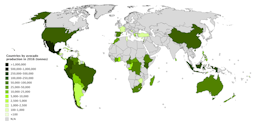 Fig. 51  A choropleth map showing countries by avocado production in tonnes, based on 2016 data from the Food and Agriculture Organization Corporate Statistical Database (FAOSTAT). Further Reading Persea americana: Avocado, University of Florida pdf Persea americana, Floridata Establishment Cost of Avocados in South Florida, University of Florida pdf Sample Avocado Production Costs and Profitability Analysis for Florida, University of Florida pdf Uncommon Uses of Avocado, Tropical Fruit News, RFCI Avocado, Florida Gulf Coast University Plant Database pdf California Avocado Commission, Irvine, CA Avocado Botanical Art List of Growers and Vendors |
||||||||||||||||||||||||||||||||||||||||||||||||||||||||||
| Bibliography 1 Gilman, Edward F., et al. "Persea americana." Environmental Horticulture Department, UF/IFAS Extension, ENH-594, Pub. date Nov. 1993, Revised Dec. 2018, AskIFAS, edis.ifas.ufl.edu/st435. Accessed 26 Apr. 2017, 16 Apr. 2020. 2 Crane, Jonathan H., et al. "Avocados Growing in the Home Landscape." Horticultural Sciences Dept., UF/IFAS Extension, CIR1034, Original Pub. Mar. 1983, Revised Jan. 1998, Aug. 2001, May 2003, Sept. 2005, Aug. 2007 and Sept. 2016, Reviewed Dec. 2019, AskIFAS, edis.ifas.ufl.edu/mg213. Accessed 13 June 2018, 16 Apr. 2020. 3 Popenoe, Wilson. Manual Of Tropical And Subtropical Fruits. 1920, London, Hafner Press, 1974. 4 "Tropical Fruit Management Program - Solutions for your Life." trec.ifas.ufl.edu. Tropical Research and Education (TREC). N.d. Accessed Oct. 12 2014. 5 Simonne, Amy, et al. "South Florida Tropicals: Avocado." Horticultural Sciences Department, University of Florida, IFAS Extension, Published May 1993, Reviewed Nov. 2013, edis.ifas.ufl.edu. Accessed 27 Apr. 2017. 6 "Avocado Overview, Fruitscapes." trec.ifas.ufl.edu. Tropical Research and Education (TREC). Accessed 12 Oct. 2014. 7 Fruits of Warm Climates. Julia F. Morton, Miami, 1987. 8 Mccarthy, Alec and Declan McCauley. “Growing avocados: flowering, pollination and fruit set.” Australian Center for International Agricultural Research, 28 Jan. 2020, ACIAR, agric.wa.gov.au/n/3410. Accessed 16 Apr. 2020. 9 Orwa, C., et al. "Persea americana Miller." Agroforestree Database: a tree reference and selection guide, version 4.0, 2009, Agroforestry, apps.worldagroforestry.org/treedb2/speciesprofile.php?Spid=1274. Accessed 17 Apr. 2020. 10 Christman, Steve. "Persea americana." Floridata, no. 1044, Published 2 Apr. 2007, Updated 20 Apr. 2011, floridata.com/plant/1044. Accessed 17 Apr. 2020. 11 "Taxon: Persea americana Mill." USDA, Agricultural Research Service, National Plant Germplasm System, Germplasm Resources Information Network (GRIN-Taxonomy), National Germplasm Resources Laboratory, Beltsville, Maryland, 2020, U.S. National Plant Germplasm System, npgsweb.ars-grin.gov/gringlobal/taxonomydetail.aspx?id=27393. Accessed 28 Apr. 2020. 12 Whiley, A. W. "Persea americana Miller." Edible fruits and nuts, Plant Resources of South-East Asia No 2, Edited by Verheij, E.W.M. and Coronel, R.E., PROSEA Foundation, Bogor, Indonesia, record 1530, 1991, PROSEA, (CC BY-NC-SA 3.0), www.prota4u.org/prosea/view.aspx?id=1532. Accessed 26 Apr. 2020. 13 "Synonyms for Persea americana Mill." The Plant List (2013), Version 1.1, www.theplantlist.org. Accessed 29 Apr. 2020. Videos v1,2,3,4,5,6,7,8 Crane, Johathan H. and Ian Maguire. "Cultural practices for the avocado." University of Florida, IFAS/TREC. v9 Love, Ken. "How to Prune Avocado Trees for Easy Harvesting." Hawai'i Tropical Fruit Growers, HTFG, 27 Jan. 2021, Updated 8 Apr. 2022, www.htfg.org/post/how-to-prune-avocado-trees-for-easy-harvesting. Accessed 16 May 2024. Photographs Fig. 1 StevenGiacomelli. "Persea americana." Pixabay, pixabay.com/photos/avocado-sliced-avocado-slice-1287100/. Accessed 29 Apr. 2020. Fig. 2 B.navez. "Avocado tree (Persea americana) annual new foliage." Encyclopedia of Life, via Wikimedia Commons, 4852559, 24 Sept. 2008, EOL, (CC BY-SA 3.0), eol.org/media/773897. Accessed 26 Apr. 2020. Fig. 3 Bff. "The leaf of Persea americana." Encyclopedia of Life, via Wikimedia Commons, 9754471, 5 July 2009, EOL, (CC BY-SA 3.0), eol.org/media/7739031. Accessed 26 Apr. 2020. Fig. 4 Petar43. "The leaf of Persea americana." Encyclopedia of Life, via Wikimedia Commons, 46580242, 22 June 2015, EOL, (CC BY-SA 3.0), eol.org/media/7738969. Accessed 25 Apr. 2020. Fig. 5,7,8,9 Janzen, Aaniel H. "Persea americana." Guanacaste Dry Forest ConservationFund, EOL, (CC BY-NC-SA 2.0), eol.org/pages/596888/media. Accessed 24 Apr. 2020. Fig. 6,38 Ritter, M., Mark, W. and Reimer, J. SelecTree. Persea americana Tree Record. 1995-2015. selectree.calpoly.edu. Web 15 Oct.2015. Fig. 10 Biff. "The leaf of Persea americana." Wikimedia Commons, 5 July 2009, GFDL, (CC BY-SA 3.0), commons.wikimedia.org/wiki/File:Persea_americana20090705_10.jpg. Accessed 28 Apr. 2020. Fig. 11 B.navez. "Avocado flowers (Persea americana)." Encyclopedia of Life, via Wikimedia Commons, 4851163, 24 Sept. 2008, EOL, (CC BY-SA 3.0), eol.org/media/7738975. Accessed 26 Apr. 2020. Fig. 12 Maguire, Ian. Avocados Growing in the Florida Home Landscape. 2013. edis.ifas.ufl.edu Accessed 4 Feb. 2014. Fig. 13 Mandemaker, Andrew. "Honey bee (Apis mellifera) pollinating Avocado cv. Zutano (Persea americana) flower." Wikimedia Commons, 1 Oct. 2004, (CC BY-SA 2.5), Image cropped, commons.wikimedia.org/wiki/File:Honeybee_(Apis_mellifera)_pollinating_Avocado_cv._Zutano_(Persea_americana)_flower.JPG. Accessed 26 Apr. 2020. Fig. 14 A16898. "Persea americana flowers." Encyclopedia of Life, via Wikimedia Commons, 1387791, 20 Nov. 2006, EOL, (CC BY-SA 3.0), eol.org/media/7738880. Accessed 25 Apr. 2020. Fig. 15,33 "Persea americana, Persea gratissima." Top Tropicals Tropical Plant Catalog, toptropicals.com. Accessed 15 Oct. 2013. Fig. 16,17,18 Mccarthy, Alec and Declan McCauley. “Growing avocados: flowering, pollination and fruit set.” Australian Center for International Agricultural Research, 28 Jan. 2020, ACIAR, agric.wa.gov.au/n/3410. Accessed 16 Apr. 2020. Fig. 19,31,32 Jackson, Karen. "Avocado Series." 2013, www.growables.org. Fig. 20 B.navez. "Avocados (Persea americana): big fruits variety bearing both young fruits and ripen fruits one year old. Young foliage of avocado trees (when leaves are developing) is typically red. Picture taken on Reunion island." Encyclopedia of Life, via Wikimedia Commons, 16684293, 25 Sept. 2011, EOL, (CC BY-SA 3.0), eol.org/media/7738884. Accessed 25 Apr. 2020. Fig. 21 "Persea americana Mill. 'Choquette'." USDA, Agricultural Research Service, National Plant Germplasm System, Germplasm Resources Information Network (GRIN-Taxonomy), National Germplasm Resources Laboratory, Beltsville, Maryland, 2020, MIA 22683, 1 May 1974, U.S. National Plant Germplasm System, npgsweb.ars-grin.gov/gringlobal/accessiondetail.aspx?id=1088143. Accessed 24 Apr. 2020. Fig. 22 Pirkl, Christian. "Avocado in Santiago de Cuba." Encyclopedia of Life, via Wikimedia Commons, 50625615, 25 July 2009, EOL, (CC BY-SA 3.0), eol.org/media/7738980. Accessed 26 Apr. 2020. Fig. 23 Top Tropicals. "Avocado 'Choquette' grafted." Wikimedia Commons, 11 Sept.2016, (CC BY-SA 4.0), commons.wikimedia.org/wiki/File:Avocado_cv_Choquette.jpg. Accessed 28 Apr. 2020. Fig. 24 DUPONT,Bernard. "Avocados (Persea americana). Red Chilli Hideaway, Kampala, UGANDA." Encyclopedia of Life, via Flickr, 18159574242, 18 Sept. 2008, EOL, (CC BY-SA 3.0), eol.org/media/6691860. Accessed 26 Apr. 2020. Fig. 25 Philmarin. "Detalle del extremo peduncular del fruto con los tépalos persistentes - Probablemente var. "Fuerte", origen Huelva, comercio, Madrid (España)." Encyclopedia of Life, via Wikimedia Commons, 30225084, 5 Dec. 2013, EOL, (CC BY-SA 3.0), eol.org/media/7738907. Accessed 25 Apr. 2020. Fig. 26 Hariadhi. "Alpukat (Bahasa Indonesia), Avocado." Encyclopedia of Life, via Wikimedia Commons, 3563519, 12 Feb. 2008, EOL, (CC BY-SA 3.0), eol.org/media/7738949. Accessed 25 Apr. 2020. Fig. 27 Ragesoss. "The split seed of a California-grown Hass avocado, with the embryo exposed." Wikimedia Commons, 18 Aug. 2008, GFDL, (CC BY-SA 3.0), commons.wikimedia.org/wiki/Category:Avocado#/media/File:Avocado_seed,_split.jpg. Accessed 25 Apr. 2020. Fig. 28 LadyofHats. "Diagram from the seed of an avocado where the embryo is visible." Wikimedia Commons, 1 Oct.2007, Public Domain, commons.wikimedia.org/wiki/File:Avocado_seed_diagram-en.svg. Accessed 28 Apr. 2020. Fig. 29 Bff. The seedling of Persea americana. 2009. commons.wikimedia.org. (CC BY-SA 3.0). Accessed 8 Jan. 2016. Fig. 30 Ingvar-fed. "A young (2 weeks old) avocado sprout." Wikimedia Commons, 8 May 2010, GFDL, (CC BY-SA 3.0), commons.wikimedia.org/wiki/File:Persea americana (Avocado) Sprout 08May2010.JPG. Accessed 28 Apr. 2020. Fig. 31 Hofstetter, Mark. "Persea americana, Young avocado plant (seedling), complete with seed and roots." Wikimedia Commons, 23 July 2006, GFDL, (CC BY-SA 2.5), commons.wikimedia.org/wiki/File:Avocado_Seedling.jpg. Accessed 26 Apr. 2020. Fig. 32,35 Wasik, Wilhelmina C. "Persea americana Mill. 'Tower 2'." USDA, Agricultural Research Service, National Plant Germplasm System, Germplasm Resources Information Network (GRIN-Taxonomy), National Germplasm Resources Laboratory, Beltsville, Maryland, 2020, MIA 27195, 13 Aug. 2008, U.S. National Plant Germplasm System, npgsweb.ars-grin.gov/gringlobal/accessiondetail.aspx?id=1094352. Accessed 24 Apr. 2020. Fig. 36 Sanchez, Alexander. "Persea americana Mill. 'Choquette'." USDA, Agricultural Research Service, National Plant Germplasm System, Germplasm Resources Information Network (GRIN-Taxonomy), National Germplasm Resources Laboratory, Beltsville, Maryland, 2020, MIA 22683, 8 Apr. 2020, U.S. National Plant Germplasm System, npgsweb.ars-grin.gov/gringlobal/accessiondetail.aspx?id=1088143. Accessed 24 Apr. 2020. Fig. 37 Senckenberg. "Persea americana Mill. United Republic of Tanzania." African Plants - a photo guide, 25 Apr. 2011, doi.org/10.15468/r9azth, via GBIF.org, 29 Apr. 2011, www.gbif.org/occurrence/1288082632. Accessed 29 Apr. 2020. Fig. 39 ארכיון רמת הכובש. "Agriculture in Israel." Encyclopedia of Life, Ramat-Hacovesh Archive via the PikiWiki, 18040348, 14 Jan. 2012, EOL, (CC BY-SA 3.0), eol.org/media/7738884. Accessed 25 Apr. 2020. Fig. 40 B.navez. "Avocados (Persea americana): orchard on Reunion island (Les Avirons) with coffee planted between the rows." Encyclopedia of Life, via Wikimedia Commons, 2754901, 15 Sept. 2007, EOL, (CC BY-SA 3.0), eol.org/media/7738901. Accessed 25 Apr. 2020. Fig. 41 שחר דרורי. "Agriculture in Israel." Encyclopedia of Life, Ramat-Hacovesh Archive via the PikiWiki, 18040351, 14 Jan. 2012, EOL, (CC BY-SA 3.0), eol.org/media/7738887. Accessed 25 Apr. 2020. Fig. 42 Lore, Lisa. "Avocado Banana Smoothie Recipe." Foodista, 13 Aug. 2013, (CC BY 3.0), www.foodista.com/recipe/6RYFBGYC/avacado-banana-smoothie-recipe. Accessed 26 Apr. 2020. Fig. 43 Vegan Feast Catering. "A mocha almond fudge avocado layer cake. Avocado is present within the layers of the cake." Wikimedia Commons, via Flickr, 5 June 2010, (CC BY 2.0), commons.wikimedia.org/wiki/File:Mocha_almond_fudge_avocado_cake_(4673005762).jpg. Accessed 28 Apr. 2020. Fig. 44 TesaPhotography. "Persea americana." Pixabay, pixabay.com/photos/sushi-avocado-shrimp-japanese-2608281/. Accessed 29 Apr. 2020. Fig. 45 Chen, Sharon. "Mango Avocado Salsa." Foodista, (CC BY 3.0), www.foodista.com/recipe/2J6YXQ6N/mango-avocado-salsa. Accessed 26 Apr. 2020. Fig. 46 Tracy. "Avocado Baked Eggs with Tomato, Basil, and Bacon." Foodista, May 11, 2015, (CC BY 3.0), www.foodista.com/recipe/8J2TRXWZ/avocado-baked-eggs-with-tomato-basil-and-bacon. Accessed 26 Apr. 2020. Fig. 47 Matt. "Japanese Noodles with Creamy Pumpkin and Avocado Sauce." Foodista, 23 Nov. 2017, (CC BY 3.0), www.foodista.com/recipe/5V72FC7Y/japanese-noodles-with-creamy-pumpkin-and-avocado-sauce. Accessed 26 Apr. 2020. Fig. 48 cyclonebill. "Sliced avocado. Copenhagen, Denmark." Wikimedia Commons, via Flickr, 18 Jan. 2011, (CC BY-SA 2.0), commons.wikimedia.org/wiki/File:Sliced_avocado.jpg. Accessed 28 Apr. 2020. Fig. 49 ChildofMidnight. "Crab, grapefruit and Avocado salad." Wikimedia Commons, via English Wikipedia, 14 Feb. 2009, GFDL, (CC BY-SA 3.0), commons.wikimedia.org/wiki/File:Crab_and_avocado_salad.jpg. Accessed 26 Apr. 2020. Fig. 50 Wunderlin, R. P., et al. "Species Distribution Map: Persea americana." Atlas of Florida Vascular Plants, [S. M. Landry and K. N. Campbell (application development), USF Water Institute] Institute for Systematic Botany, University of South Florida, Tampa, florida.plantatlas.usf.edu/Plant.aspx?id=443. Accessed 15 Oct. 2015. Fig. 51 JackintheBox. "A choropleth map showing countries by avocado production in tonnes, based on 2016 data from the Food and Agriculture Organization Corporate Statistical Database (FAOSTAT)." MapChart.net, 23 Aug. 2018, Wikimedia Commons, (CC BY-SA 4.0), commons.wikimedia.org/wiki/File:Sliced_avocado.jpg. Accessed 28 Apr. 2020. * UF/IFAS Assessment of Non-native Plants in Florida's Natural Areas ** Information provided is not intended to be used as a guide for treatment of medical conditions. Published 12 Apr. 2014 LR. Last update 17 May 2024 LR |
|||||||||||||||||||||||||||||||||||||||||||||||||||||||||||

